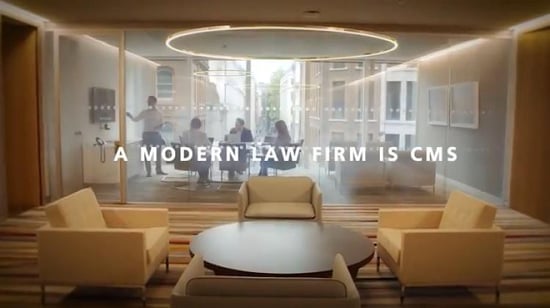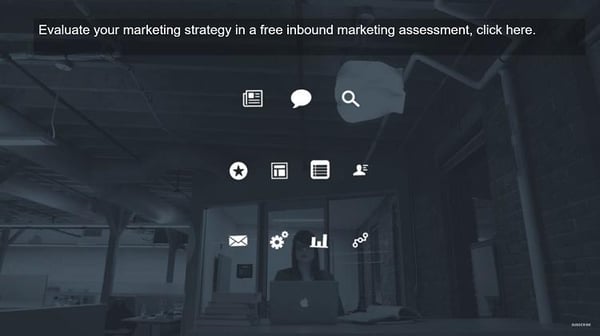Videos have become more and more popular. They appear on websites, social media, and even in email marketing. And there's a good reason companies are using videos more.
Around one-third of all online activity is video viewing. Companies who use video in their marketing efforts grow an average of 49% faster.
When you look at the stats and the increasing popularity of video, it becomes clear that you need to incorporate it into your marketing strategy.
A company video introduces consumers to your brand and puts a face to the name. You want the video to look professional and capture the attention of viewers.
Here are nine essentials to keep in mind as you create your company video.
1. Brainstorm With Employees
The way you see your company and the way others see it may be two different animals. Take the time to pull in key employees and brainstorm about the overall message you send as a brand.
The sales department is an excellent place to start with the brainstorming process because they regularly talk to customers and know the way customers view your brand.
2. Keep It Short
You don't need to tell your entire life story. Keep the video short and to the point. The general rule of thumb is to keep company videos to two minutes or less.
You don't need to talk about how your great-great-great grandfather migrated here in the early 1800s. That's interesting information, but it isn't necessary for your short, introductory video. Instead, focus on what your company is about and why you do what you do.

CMS Law created an interesting video that is a mere 1.36 minutes, but it crams a lot of material into that span of time.
They highlight the things they do, who they work with, and their modern approach to law, flashing images and words across the screen until the video ends with the tagline, "A modern law firm is CMS."
3. Add Sound
How you use sound in your video can make or break it. Adding background music isn't as simple as it sounds. The volume can't overshadow any of the people speaking, for example, and it needs to fade in and out at the appropriate spots in the video.
Fortunately, sound editing software makes this process easier than ever before. You can create a video entirely made of music and images as CMS did above, or you can use music throughout keyframes in the video.
4. Focus on the Customer
Put the focus of the video on the customer. Create a user persona and place yourself in their shoes. If you were considering doing business with a company, what would you want to know?
Would you want the video to feel serious or entertaining? Think about what your customer needs from you. If you run a bank, then your customer needs to feel secure entrusting their money to you. On the other hand, if you run a clothing line aimed at Gen Z, your customer may want something light-hearted and fun.
5. Write a Script
If you're creating your own video, it's tempting just to wing it. It's easy enough to shoot footage of your offices and daily operations. However, finding the perfect footage isn't as easy as it sounds.
Take the time to write out the exact shots you want for the video, even if you are only using images and text. Go through each part of the script and make sure you have multiple shots of the things you want to feature. If you're doing more of a skit-type video, then you'll want those in front of the camera to practice before filming.
6. Add a Call to Action
Adding a call to action (CTA) to your video increases conversions. According to data from Wistia, a mid-roll video CTA typically has a conversion rate of 15%-23%. Considering that sidebar and generic end-of-post CTAs have a conversion rate between 0.5% and 1.5%, video CTAs have a clear advantage!

HubSpot explains how they solve a problem for marketers in their video titled "What Is HubSpot?" They walk through some of the more common problems business owners have with marketing and explain why they are a better option.
It is a fairly short video, but it lays out exactly what they do and how it will help the viewer. About two-thirds of the way through the video, a CTA pops up that reads "Evaluate your marketing strategy in a free inbound marketing assessment, click here."
7. Make an Emotional Connection
If you can reach your audience on an emotional level, they'll feel more connected to you and will be more likely to engage with your brand. Use sentimental stories, testimonials, and founder stories to draw users in and make that connection.
8. Choose Embed or Stream
Once you've completed your video, decide whether to upload it and stream from your site, or use a service such as YouTube and then embed the video on your site.
There are a lot of advantages to using YouTube – the video platform is one of the largest social media channels with more than 1.8 billion monthly users. Your video will load better, play on multiple types of devices, and get automatically optimized for smaller screens.
9. Share Your Videos
Your final step in your video marketing plan is figuring out how to get people to view your company video. One of the best ways to accomplish this is by sharing it with current customers via email.
Ask them to tell others about your brand. Upload or share the video with all your social media channels. You should already be on those networks where your typical customers hang out the most.
Video Marketing – Wave of the Present and Future
Video marketing is here to stay. Expect marketing videos to continue to grow in popularity. Consumers today have shorter attention spans and are more entertained by images. Tap into this evolution by adding videos to your own marketing efforts.


Lexie Lu
Lexie Lu is a freelance graphic designer and blogger. She keeps up with the latest design news and always has some coffee in close proximity. She writes on Design Roast and can be followed on Twitter @lexieludesigner.